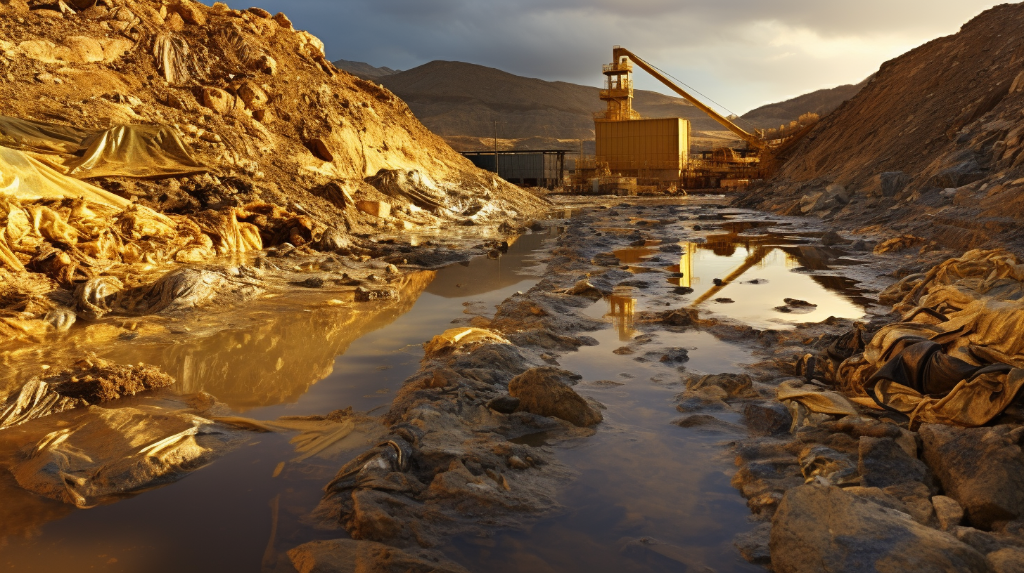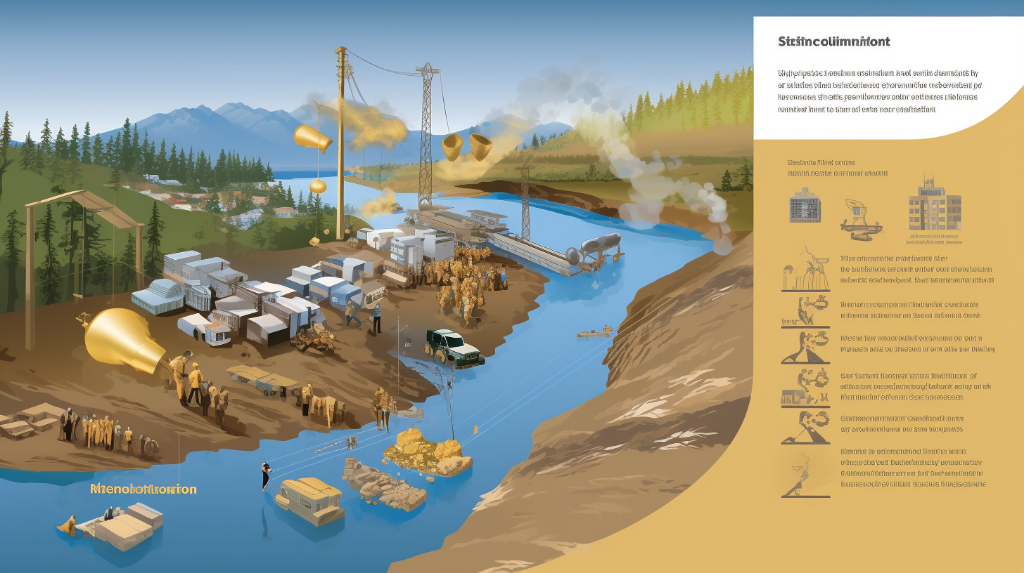Gold mining has long been a lucrative industry that has captivated investors and seekers of the precious metal. However, behind the allure of gold lies a darker reality of environmental and social impacts that can have a significant influence on investments. In this article, we will explore the various facets of gold mining, including its environmental consequences and social ramifications, and how these factors can affect investment decisions.
Environmental Impacts of Gold Mining

Gold mining, like any other form of mining, has a range of environmental impacts that can have lasting consequences. One of the most prominent environmental issues associated with gold mining is habitat destruction. Large-scale mining operations often require deforestation and the clearing of land, resulting in the displacement and destruction of natural habitats for many species.
In addition to habitat destruction, gold mining also poses a significant threat to water sources. The use of toxic chemicals, such as cyanide, in the extraction process can lead to water pollution, contaminating rivers and streams. This pollution not only affects local ecosystems but also poses a risk to the health of communities that rely on these water sources for drinking and irrigation.
Water Pollution in Gold Mining

The process of extracting gold involves crushing ore into a fine powder and then mixing it with water and various chemicals to separate the gold particles. This mixture, known as slurry, is often treated with cyanide to dissolve the gold. Unfortunately, the cyanide can leak into surrounding water sources, causing severe pollution.
Once the gold has been extracted, the leftover ore, known as tailings, is often stored in large ponds. These tailings contain remnants of the chemicals used in the extraction process, posing a long-term environmental risk. The tailings can release toxic substances into the surrounding soil and water, leading to ongoing pollution even after mining operations have ceased.
Social Impacts of Gold Mining

While the environmental impacts of gold mining are significant, the social consequences should not be overlooked. Gold mining operations can have profound effects on local communities and indigenous populations. One of the main concerns is land displacement and the loss of traditional livelihoods.
Indigenous communities, in particular, often have a deep connection to the land and rely on it for their cultural and economic well-being. When large-scale mining operations encroach upon their territories, it can result in the displacement and disruption of these communities, leading to social unrest and loss of cultural heritage.
Child Labor in Gold Mining

An alarming social issue associated with gold mining is the prevalence of child labor in certain regions. Children are often forced to work in dangerous and hazardous conditions, exposed to toxic chemicals and risking their health and well-being in the process. This exploitative practice not only robs children of their childhood but also perpetuates a cycle of poverty and inequality.
The Influence of Environmental and Social Impacts on Investments

As awareness of the environmental and social impacts of gold mining grows, investors are increasingly taking these factors into consideration when making investment decisions. Sustainable and responsible investing has gained momentum, with many investors prioritizing companies that demonstrate commitment to environmental and social responsibility.
Investors understand that companies involved in gold mining operations with a history of environmental and social violations may face legal and reputational risks. These risks can result in financial losses and damage the company’s long-term prospects. Thus, investors are becoming more cautious and selective in their investments, favoring companies that adhere to strict environmental and social standards.
Increasing Role of ESG Metrics in Investment Analysis

Environmental, social, and governance (ESG) metrics are becoming increasingly important in investment analysis. Investors now evaluate companies based on their performance in these areas. Mining companies that prioritize sustainable practices, minimize environmental impacts, and prioritize the welfare of local communities are more likely to attract investors who value responsible investing.
Conclusion

Gold mining may have a shiny allure, but it comes with significant environmental and social impacts that should not be ignored. The destruction of habitats, water pollution, land displacement, and child labor are just a few of the many challenges associated with gold mining. As investors become more conscious of these issues, they are increasingly looking for companies that prioritize sustainability and responsibility. Ultimately, the environmental and social impacts of gold mining can have a profound influence on investment decisions, shaping the future of the industry.







